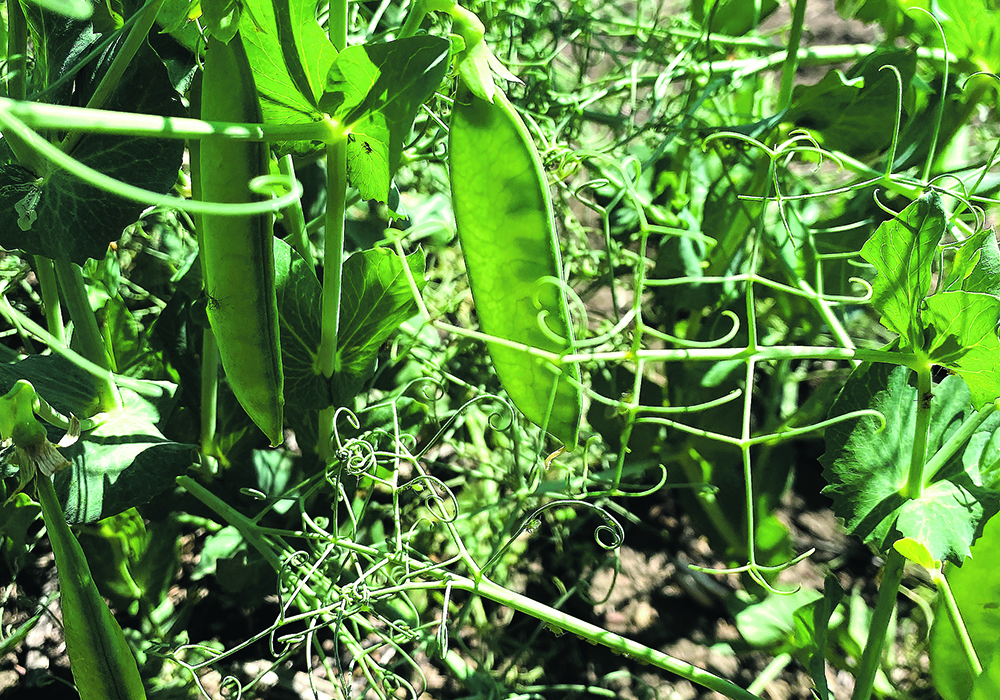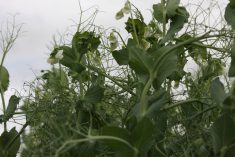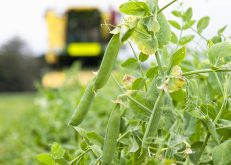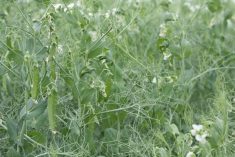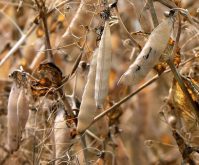Researcher suggests total protein per acre is a better and more attainable measure than protein content
The 10-year average for pea yields in Saskatchewan, from 2012 to 2021, is about 35 bushels per acre and, in most years, protein content is 21 to 24 percent.
Plant breeders and leaders in Canada’s pea industry want that protein number to climb higher, to 26 percent, on average.
“Protein concentration. That’s probably the top demand from the industry. Can you have more concentration of protein?” said Tom Warkentin, a pea and soybean breeder at the University of Saskatchewan, in a YouTube video posted in March.
“If you have more concentration of protein, then the whole food science side of it works better. It’s more efficient to use those varieties in fractionation.”
Read Also

Why feds imposed EV tariffs
Moe and Kinew have a fight on their hands when it comes to eliminating the EV tariff. Canada has to worry about pissing off the U.S. and Mexico and hundreds of thousands of auto workers.
In 2019, Saskatchewan’s Agriculture Development Fund provided Warkentin with $2.4 million, with the goal of increasing protein concentration in yellow peas from 23 to 26 percent.
Other groups are working on similar projects.
In 2020, Protein Industries Canada announced a partnership with Sightline Innovation, DL Seeds and SeedNet, to develop a high yielding and high protein yellow pea.
“(The partnership) will utilize leading-edge artificial intelligence (AI) and data trust tools to optimize current plant breeding processes,” said a 2020 news release, announcing a $3.5 million investment.
Deng-Jin Bing, an Agriculture Canada pea breeder in Lacombe, Alta., is also trying to increase the protein content of peas. Bing and other Ag Canada researchers have released 10 field pea varieties since 2018.
One standout is AAC Planet.
“(It’s) high yielding and offers resistance to powdery mildew,” says a Pulse Science Research Cluster report from March. “(AAC Planet) has been licensed to SeedNet Inc. in Alberta. The certified seed of this variety should be available to interested pea growers in the next few years.”
More varieties are in the pipeline and farmers can look forward to peas with higher yields.
“We’ve been making steady incremental improvement in seed yield of field pea varieties,” Bing said. “It looks like it is still possible to improve the yield of field pea varieties through conventional breeding…. The varieties have not yet reached a yield plateau.”
Attaining a high-yielding and high-protein pea variety is a difficult hurdle to overcome. When genetic selection focuses on protein content, yield will suffer.
“We have breeding lines that have 26-30 percent of protein content. Unfortunately, protein content is strongly negatively associated with seed yield,” Bing wrote in an email to The Western Producer.
“Finding a balance between yield and protein content is one of the challenges pea breeders, pulse industry and expert committees are facing, and have to come up with an answer…. If protein content… is overly emphasized in variety development and (the) variety registration system, we will end with pea varieties with lower yield.”
Balance is probably the key word in that quote. Growers want more yield and pea processors want higher protein content.
Bing is struggling to find the middle ground, where growers and agri-food processors are both satisfied. In an email, he proposed a different way of thinking about the problem.
If new pea varieties have higher yields, consistently in the 40s, for example, then a field in Western Canada will have more protein per acre.
“My suggestion would be to measure the total protein yield per hectare, instead of the protein content,” he wrote. “An ideal pea variety should have high seed yield and (high) protein yield per unit area.”
That plan may sound reasonable but pleasing everyone in the value chain is not easy.
“I can’t tell what is a reasonable target for protein content of future pea varieties,” Bing said. “It depends on the acceptable levels of protein content and seed yield by the producers, and (the) processing industry (for) protein fractionation.”


